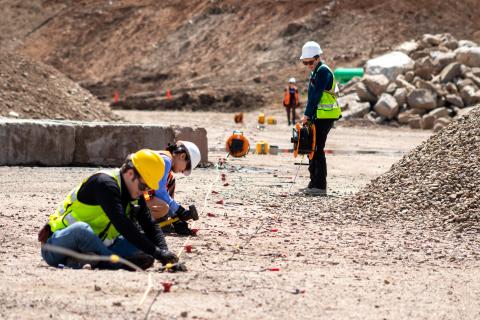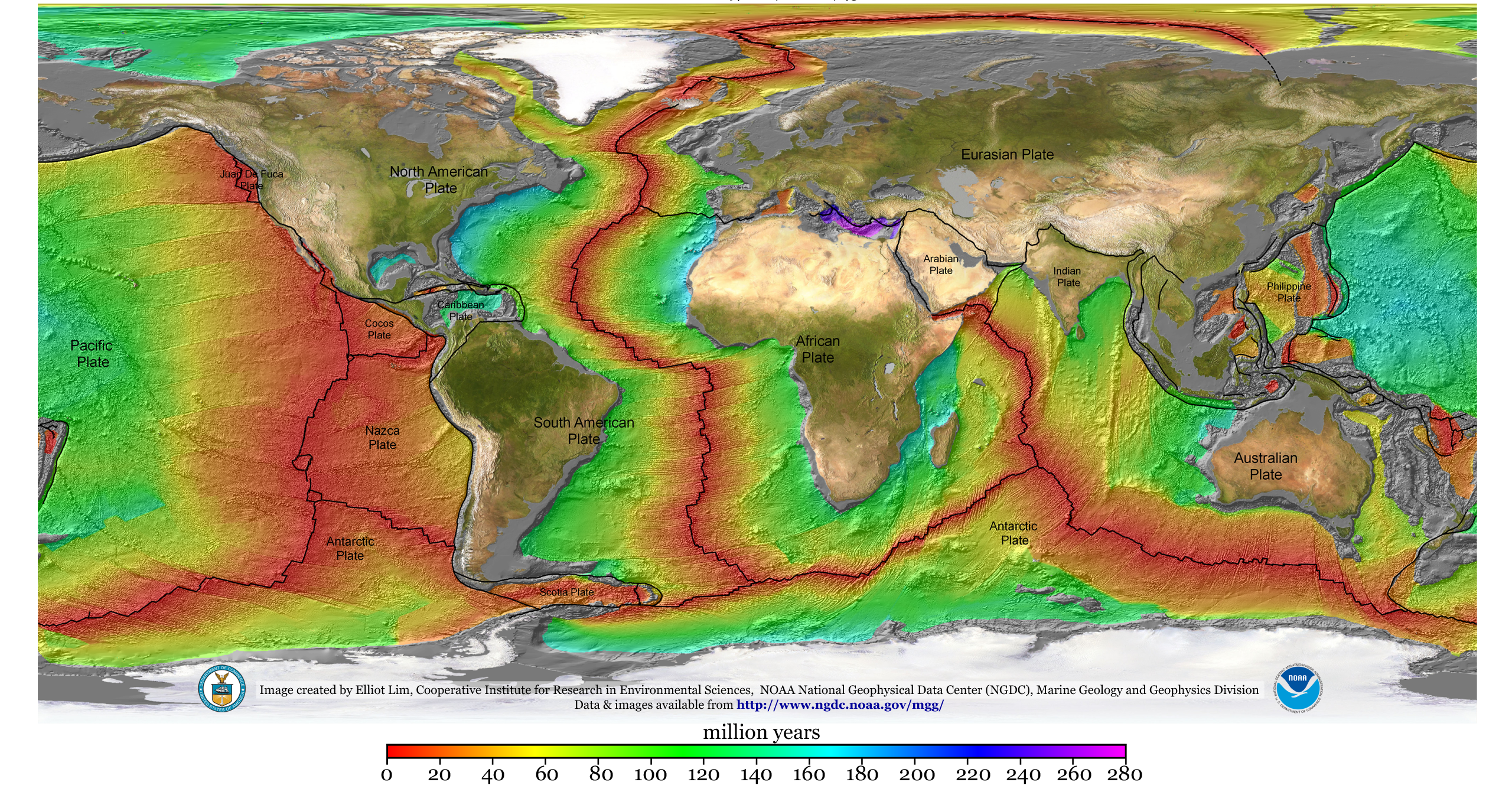All Categories
Featured
Table of Contents
- – Geophysical Surveying in Glen Forrest WA 2023
- – Career Guide: Geophysicist in Carlisle Weste...
- – What Would I Be Doing As A Geophysicist? in ...
- – Geophysical Engineering Undergraduate Progr...
- – Environmental Geophysicist in Byford Austra...
- – Integrated Geophysical Surveys For The Saf...
- – Geophysical Survey in Roleystone Western A...
Geophysical Surveying in Glen Forrest WA 2023
doi:10. 1556/AGeod. 45.2010. 2.9. S2CID 122239663. Temple 2006, pp. 162166 Russo, Lucio (2004 ). Berlin: Springer. p. 273277. Temple 2006, pp. 177181 Newton 1999 Section 3 American Geophysical Union (2011 ). "Our Science". About AGU. Obtained 30 September 2011. "About IUGG". 2011. Obtained 30 September 2011. "AGUs Cryosphere Focus Group". 2011. Archived from the original on 16 November 2011.
Bozorgnia, Yousef; Bertero, Vitelmo V. (2004 ). Earthquake Engineering: From Engineering Seismology to Performance-Based Engineering. CRC Press. ISBN 978-0-8493-1439-1. Chemin, Jean-Yves; Desjardins, Benoit; Gallagher, Isabelle; Grenier, Emmanuel (2006 ). Mathematical geophysics: an intro to turning fluids and the Navier-Stokes equations. Oxford lecture series in mathematics and its applications. Oxford University Press. ISBN 0-19-857133-X.
( 2001 ). Dynamic Earth: Plates, Plumes and Mantle Convection. Cambridge University Press. ISBN 0-521-59067-1. Dewey, James; Byerly, Perry (1969 ). "The Early History of Seismometry (to 1900)". Bulletin of the Seismological Society of America. 59 (1 ): 183227. Archived from the initial on 23 November 2011. Defense Mapping Agency (1984 ). (Technical report).
Career Guide: Geophysicist in Carlisle Western Australia 2023
TR 80-003. Obtained 30 September 2011. Eratosthenes (2010 ). Eratosthenes' "Geography". Pieces gathered and translated, with commentary and additional material by Duane W. Roller. Princeton University Press. ISBN 978-0-691-14267-8. Fowler, C.M.R. (2005 ). (2 ed.). Cambridge University Press. ISBN 0-521-89307-0. "GRACE: Gravity Healing and Environment Experiment". University of Texas at Austin Center for Space Research Study.
Obtained 30 September 2011. Hardy, Shaun J.; Goodman, Roy E. (2005 ). "Web resources in the history of geophysics". American Geophysical Union. Archived from the original on 27 April 2013. Retrieved 30 September 2011. Harrison, R. G.; Carslaw, K. S. (2003 ). "Ion-aerosol-cloud procedures in the lower atmosphere". 41 (3 ): 1012. Bibcode:2003 Recreational vehicle, Geo..41.
doi:10. 1029/2002RG000114. S2CID 123305218. Kivelson, Margaret G.; Russell, Christopher T. (1995 ). Introduction to Area Physics. Cambridge University Press. ISBN 978-0-521-45714-9. Lanzerotti, Louis J.; Gregori, Giovanni P. (1986 ). "Telluric currents: the natural surroundings and interactions with manufactured systems". In Geophysics Study Committee; Geophysics Research Study Online Forum; Commission on Physical Sciences, Mathematics and Resources; National Research Study Council (eds.).
What Would I Be Doing As A Geophysicist? in Orelia Australia 2020
The Earth's Electrical Environment. National Academy Press. pp. 232258. ISBN 0-309-03680-1. Lowrie, William (2004 ). Principles of Geophysics. Cambridge University Press. ISBN 0-521-46164-2. Merrill, Ronald T.; Mc, Elhinny, Michael W.; Mc, Fadden, Phillip L. (1998 ). The Electromagnetic field of the Earth: Paleomagnetism, the Core, and the Deep Mantle. International Geophysics Series.
They likewise research study changes in its resources to supply assistance in meeting human needs, such as for water, and to anticipate geological risks and hazards. Geoscientists use a variety of tools in their work. In the field, they may use a hammer and sculpt to gather rock samples or ground-penetrating radar equipment to search for minerals.
They likewise might use remote sensing equipment to gather information, in addition to geographical details systems (GIS) and modeling software to evaluate the data gathered. Geoscientists may monitor the work of technicians and coordinate work with other scientists, both in the field and in the lab. As geological challenges increase, geoscientists might choose to work as generalists.
Geophysical Engineering Undergraduate Program in Cardup Australia 2020
The following are examples of types of geoscientists: geologists study how effects of human activity, such as pollution and waste management, affect the quality of the Earth's air, soil, and water. They also may work to resolve problems connected with natural risks, such as flooding and erosion. study the products, processes, and history of the Earth.
There are subgroups of geologists also, such as stratigraphers, who study stratified rock, and mineralogists, who study the structure and structure of minerals. study the motion and flow of ocean waters; the physical and chemical homes of the oceans; and the ways these residential or commercial properties impact coastal locations, environment, and weather condition.
They also research modifications in its resources to offer assistance in meeting human needs, such as for water, and to predict geological risks and dangers. Geoscientists utilize a range of tools in their work. In the field, they may utilize a hammer and sculpt to gather rock samples or ground-penetrating radar devices to look for minerals.
Environmental Geophysicist in Byford Australia 2021


They also may utilize remote noticing devices to collect information, along with geographic info systems (GIS) and modeling software to analyze the information gathered. Geoscientists may monitor the work of technicians and coordinate deal with other researchers, both in the field and in the laboratory. As geological difficulties increase, geoscientists might choose to work as generalists.
The following are examples of kinds of geoscientists: geologists study how consequences of human activity, such as contamination and waste management, affect the quality of the Earth's air, soil, and water. They also may work to fix problems connected with natural hazards, such as flooding and erosion. study the products, procedures, and history of the Earth.
There are subgroups of geologists as well, such as stratigraphers, who study stratified rock, and mineralogists, who study the structure and composition of minerals. study the movement and flow of ocean waters; the physical and chemical properties of the oceans; and the ways these properties impact seaside areas, climate, and weather.
Integrated Geophysical Surveys For The Safety in Wexcombe Australia 2022
They likewise research changes in its resources to supply assistance in conference human demands, such as for water, and to predict geological dangers and hazards. Geoscientists utilize a variety of tools in their work. In the field, they may utilize a hammer and sculpt to collect rock samples or ground-penetrating radar equipment to browse for minerals.
They likewise might utilize remote noticing equipment to collect information, along with geographical info systems (GIS) and modeling software application to analyze the data gathered. Geoscientists might supervise the work of technicians and coordinate work with other scientists, both in the field and in the laboratory. As geological difficulties increase, geoscientists might opt to work as generalists.
The following are examples of types of geoscientists: geologists study how effects of human activity, such as contamination and waste management, affect the quality of the Earth's air, soil, and water. They also might work to solve problems connected with natural threats, such as flooding and disintegration. study the materials, processes, and history of the Earth.
Geophysical Survey in Roleystone Western Australia 2021
There are subgroups of geologists also, such as stratigraphers, who study stratified rock, and mineralogists, who study the structure and composition of minerals. study the motion and flow of ocean waters; the physical and chemical residential or commercial properties of the oceans; and the methods these homes impact coastal locations, environment, and weather condition.
Table of Contents
- – Geophysical Surveying in Glen Forrest WA 2023
- – Career Guide: Geophysicist in Carlisle Weste...
- – What Would I Be Doing As A Geophysicist? in ...
- – Geophysical Engineering Undergraduate Progr...
- – Environmental Geophysicist in Byford Austra...
- – Integrated Geophysical Surveys For The Saf...
- – Geophysical Survey in Roleystone Western A...
Latest Posts
Geophysical Survey in Jandakot Australia 2020
Geophysics Definition & Meaning in Roleystone Oz 2021
Geophysical Survey - Explore The Seafloor in Kinross WA 2021
More
Latest Posts
Geophysical Survey in Jandakot Australia 2020
Geophysics Definition & Meaning in Roleystone Oz 2021
Geophysical Survey - Explore The Seafloor in Kinross WA 2021